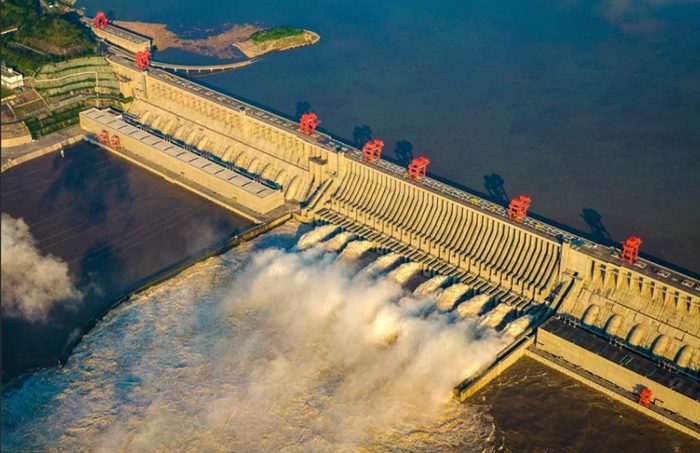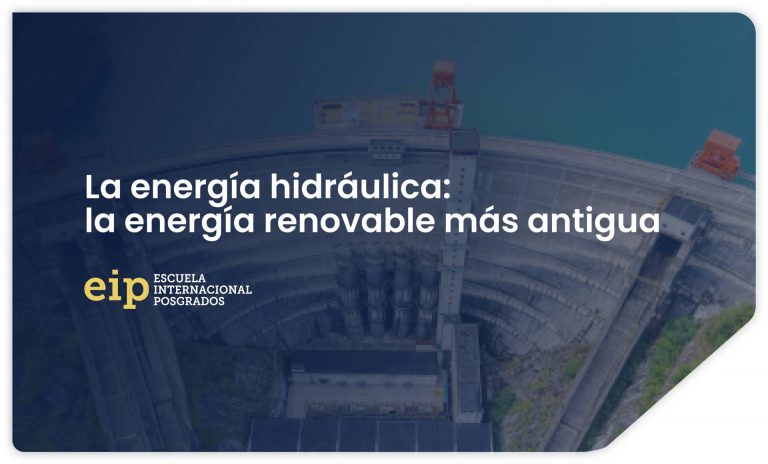Civilizations of the ancient world already took advantage of it to power their mills, today it is one of the most important and effective renewable energies, considered by some as the grandmother of renewable energies, since it began to be used at the end of the 19th century and it is estimated that 20% of energy consumed worldwide It is produced by hydraulic energy, in Spain it represents a 17% of all the energy generated in its 1,350 plants.
What is hydraulic energy?
Hydraulic energy takes advantage of the movement of water that allows electricity to be obtained from the kinetic and potential energy that is stored in currents and waterfalls., based on the principle of energy conservation.
How does a hydroelectric plant work?
The operating principle of this type of power plant is based on a turbine that rotates continuously when driven by a current or waterfall. This device is located at the base of a dam to control the flow of water supplied and will be connected to a generator responsible for producing electrical energy thanks to the rotational movement transmitted to its axis.

You might be interested in reading: “The pandemic strengthens renewable energy.”
What are the stages of a hydroelectric plant?
We could say that its mode of operation responds to a series of phases that can be described as follows:
- Water accumulation: Dams accumulate a large amount of water within the reservoir. At that moment the energy of the water is being stored in the form of potential energy, a type of energy that depends on height.
- Lock opening: at the moment in which the water is allowed to flow and, by the action of gravity, the potential energy of water is transformed into kinetic energy.
- Turbine movement: The flow of water transfers that kinetic energy to the turbine of the hydroelectric plant, causing it to rotate.
- Generator action: the movement of the turbine activates the generator that is capable of transform mechanical energy into electrical energy by the action of a magnetic field.
- Voltage change in the transformer: after the production of electrical energy (generally alternating energy), it is conducted to a transformer to increase its voltage. Thus, energy can be transported from the plant to the different supply points.
- Connection to the electric grid: once the electrical energy leaves the hydroelectric plant, it is connected to the electrical grid to be transported and distributed to the different end consumers.

Virtues and disadvantages of hydraulic plants
Let's analyze what are the benefits and possible obstacles that this type of way of producing electrical energy entails.
Regarding the main advantages, we could highlight the following:
It is cheap energy. Once the construction costs have been amortized, the production costs and other associated costs are quite moderate and assimilable.
It is a clean and sustainable energy. When working with a natural water resource, no waste is generated in its exploitation, so the impact on the carbon footprint is zero.
They are high security generating plants. The level of risk is minimal in hydraulic plants if we compare them with other types of power plants such as nuclear plants.
However, there are also less positive aspects that should be valued:
High initial cost. Indeed, the investment necessary to carry out the construction of the plant requires a great financial effort.
Climatological Dependence. The correct operation of the plant is based on the cycle or rainfall regime of the place where the plant is established, which may counterproductively affect periods of drought or river flooding.
Changes in the environment. The construction of reservoirs sometimes has a negative impact on the environment since it modifies the environment, affecting the fauna and flora of the place.
Curiosities
- The first hydroelectric plant was built in the Niagara Falls in 1879.
- The Three Gorges Dam in China has the greatest capacity to generate electrical energy, but the Itaipu Dam, which is located in South America shared by Brazil and Paraguay, generates more or less the same amount due to its location in the tropics. They get more rain and from here we get the idea of how important it is to choose where the hydroelectric plant is going to be built.




































